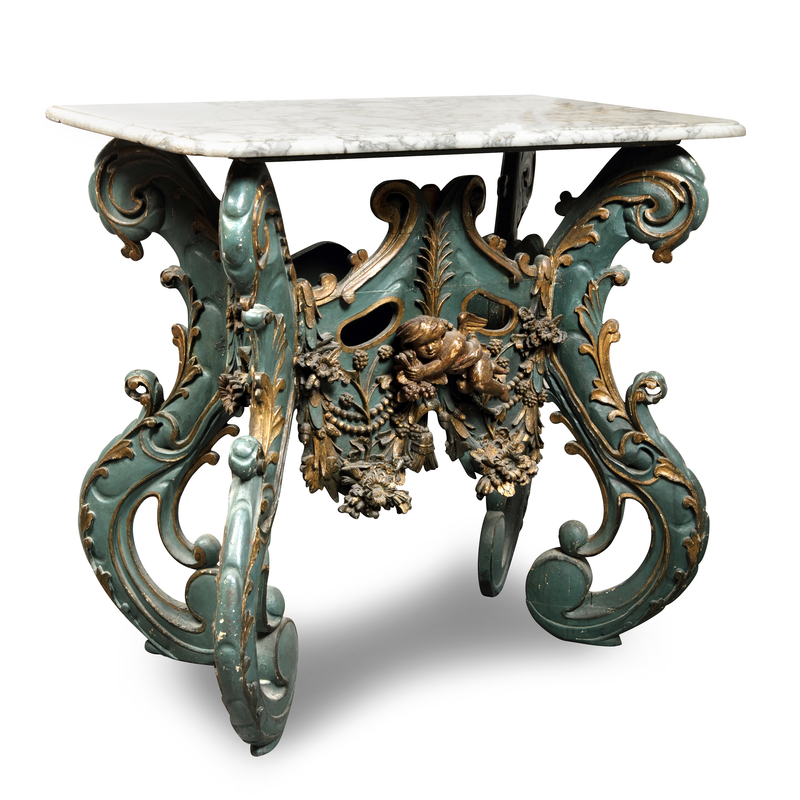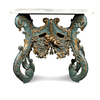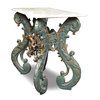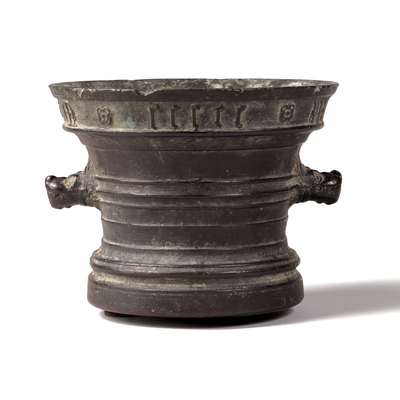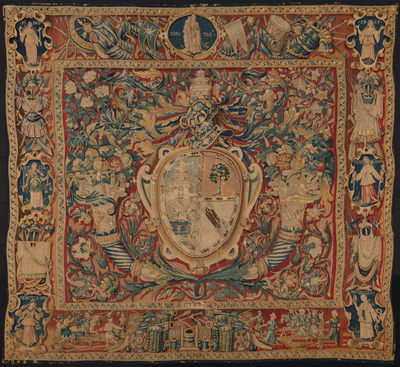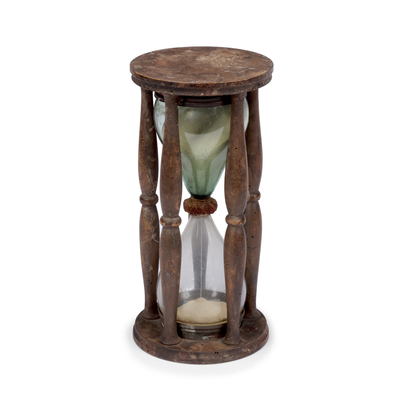Kwabtafel
Global shipping available
- Origin
- Northern Netherlands
- Period
- C. 1680
- Material
- Limewood with original polychromy and gilding, marble top
- Height
- 85 cm
- Width
- 48.5 cm
- Depth
- 96 cm
- Literature
R. Baarsen, Kwab. Ornament als kunst in de eeuw van Rembrandt, uitgave Rijksmuseum Amsterdam, 2018, pp. 81 - 87, 182, 183.
Questions about this object?
Please use one of the contact options below:
Description
This richly carved 'kwabtafel' with rectangular marble top has a lime wood base with original green polychromy and gilding. The carved kwab motives are combined with naturalistic carving. The four identical s-shaped legs are decorated with curling gilt foliage, which protrudes at both the upper and lower sides. On the voluminous front, there is a gilded and winged cherub in the centre. In his hands, he holds two bouquets of flowers. The sides of the front and the lower folds are decorated with a garland of naturalistic flowers and foliage. On either side is a string of beads between the flowering plants. Two tassels hang between the two folds. The top of the front ends in a graceful kwab ornament. Next to the cherub are two openings, with gilt edges. On both sides is a garland of leaves and flowers, with an opening in the middle. The large flower at the bottom of the garland is missing on the left side.
The table served as a wall table; the back, in contrast to the exuberant front, is left plain.
The remarkable style of the kwab originated in the sixteenth century and flourished in the work of the Utrecht silversmiths Adam and Paulus van Vianen. The flowing, organic and soft forms were initially mainly applied to precious silver objects, such as jugs and bowls. In the seventeenth century, the style of kwab mixed with more recognizable motifs and a naturalistic style. This style was very popular and resulted, among other things, in beautiful tables with a kwab foot.
